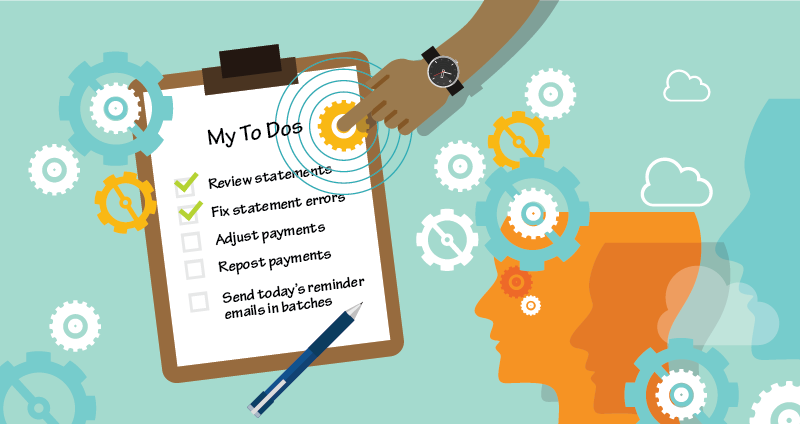Knowing the difference can save your company countless staff hours.
Partial automation and full automation refer to different levels of automation in a system or process. The primary distinction lies in the scope of automation. Partial automation involves automating specific tasks within a more extensive process, retaining staff involvement for certain aspects. Full automation, however, entails automating an entire process with minimal or no need for human intervention once the system is set up.
As patient out-of-pocket costs continue to rise, RCM companies must minimize staff time and costs while maintaining high collection rates to be competitive. Because most patient AR processes are only partially automated, managing patient AR takes staff time away from higher-value tasks, increasing overhead.
As RCM companies aim to achieve more automation for managing patient AR, it’s essential to understand the difference between partial and full automation.
Partially Automated Billing Processes:
Statement Generation:
Partial Automation: PM systems can automatically generate statements with predefined information, but human intervention is required to review and approve the statements before they are sent to patients. Staff often review statements for correctness, fix errors, and include or exclude statements in a billing run based on predefined rules. Reviewing and generating patient bills wastes staff hours that could be better spent on high-value tasks.
Payment Posting:
Partial Automation: While automated systems can match payments to patient records, exceptions or discrepancies may require human intervention. Most payment systems do not follow the specific payment posting rules used by RCM teams and require staff to adjust or repost payments correctly. To ensure accurate patient accounts, many RCM companies prioritize this process over more valuable work, like processing claims, so patients are not billed incorrectly.
Patient Communication:
Partial Automation: Automated systems may send standard payment reminders via email or text, but personalized communications require human interaction. Sending patient communications in batches with a one-size-fits-all approach yields poor results. If a patient does not engage with a billing reminder, the cost for text messages and email reminders will provide marginal ROI.
Fully Automated Billing Processes:
Statement Generation:
Full Automation: Systems automatically generate and process patient bills without staff intervention, provided no unique exceptions or issues exist. If there are common and recurring issues and exceptions, a fully automated system can process billing cycles that handle those issues without staff intervention. Fully automated statement generation will intelligently check for accuracy and ensure correct patient bills.
Payment Processing and Posting:
Full Automation: Patient payment platforms integrated with PM systems can handle the entire payment process, from statement generation to payment processing and confirmation, to posting without requiring manual intervention. Patient payment platforms that entirely automate patient AR processes will follow an RCMs desired payment posting method to eliminate manual adjustments or reposting.
Payment Plans:
Full Automation: Patients or billing staff can set up payment plans that entirely automate all payment management aspects. Payment methods are stored on file, and all patient communications and payment processing are fully automated. If a card on file is going to expire or is declined, a fully automated system will contact the patient to prompt them to update their payment method.
Statement Delivery and Billing Reminders:
Full Automation: Statements automatically delivered via mail, email, or text messages ensure more consistent and timely billing processes and better patient communications. Patient bills and billing reminders no longer need to be sent in batches with a one-size-fits-all message. With machine learning and AI support, billing reminders can offer personalized messages designed to capture attention and prompt people to pay their bills. By improving the frequency of billing delivery and through personalization, RCM can decrease costs and improve revenue.
Full Automation Minimizes Staff Effort to Increase Efficiency, Reduce Errors, and Achieve Consistent and Rapid Processing.



